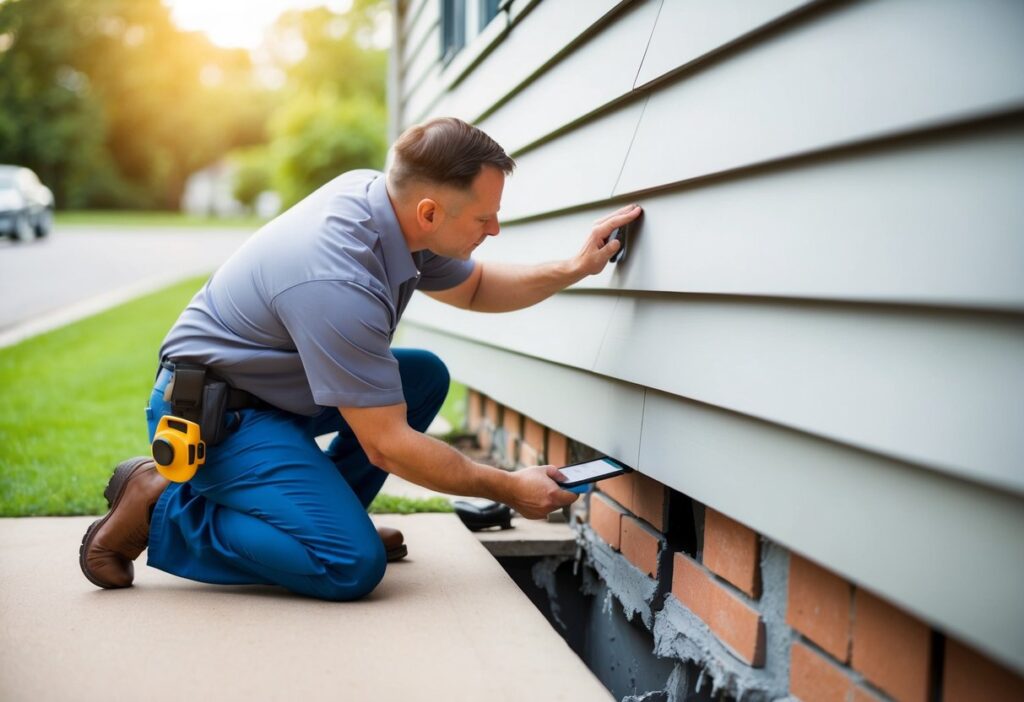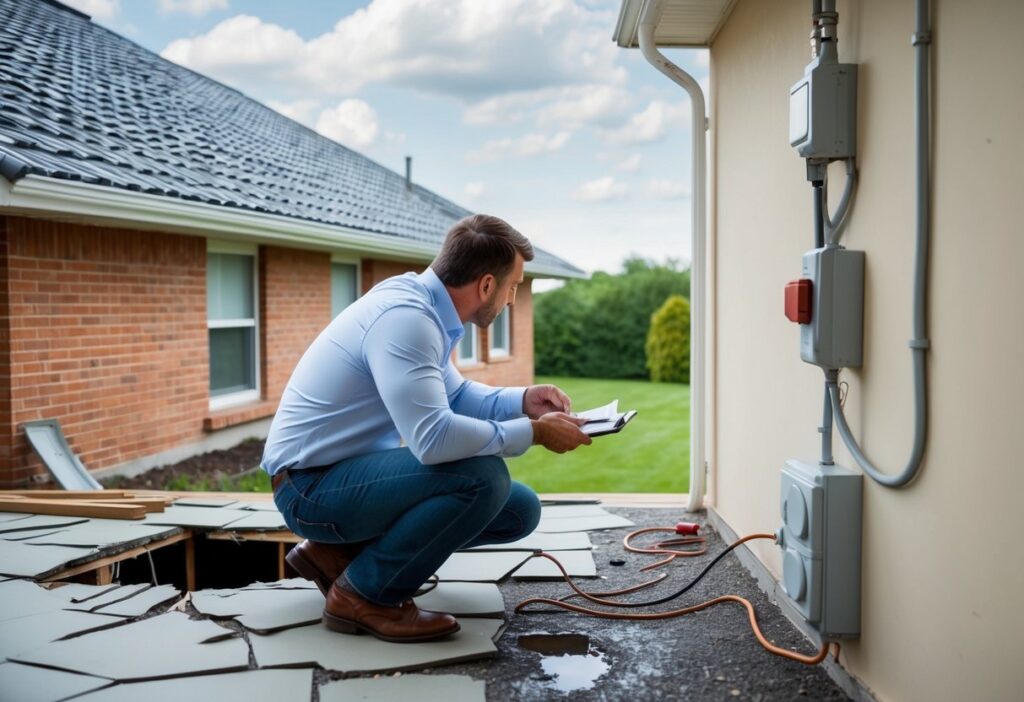Anúncios
Buying your first home is exciting, but it can also be overwhelming. One crucial step many first-time buyers don’t fully understand is the home inspection.
This important evaluation reveals the true condition of a property beyond what’s visible during a showing.

A thorough home inspection can uncover hidden problems that could cost thousands to repair, including foundation issues, outdated electrical systems, or water damage that sellers might not disclose.
Many new buyers focus on cosmetic features while missing potential structural or safety concerns that matter more in the long run.
Most first-time homebuyers don’t know what to look for during inspections or which questions to ask. They often skip attending the inspection altogether, missing valuable information about their potential new home’s maintenance needs and safety issues.
The Basics of Home Inspections

Home inspections provide crucial information about a property’s condition before purchase. They help buyers make informed decisions and potentially negotiate repairs or price adjustments based on discovered issues.
Purpose of Home Inspections
A home inspection is a thorough examination of a property’s physical structure and systems. It aims to identify any existing problems or potential concerns that could affect the home’s value or safety.
Inspections protect buyers from purchasing properties with hidden defects. They provide peace of mind and can save thousands of dollars in unexpected repairs.
Most mortgage lenders require inspections before approving loans. This requirement exists because lenders want to ensure the property secures their investment adequately.
Inspections also give buyers leverage in negotiations. Discovered issues often lead to requests for repairs, credits, or price reductions from sellers.
Key Components Evaluated During Inspections
Foundation and Structure: Inspectors examine the home’s structural integrity, looking for cracks, settling issues, or water damage that could indicate serious problems.
Roof System: The inspection covers roof materials, chimneys, gutters, and downspouts. Inspectors look for leaks, missing shingles, and signs of wear.
Electrical Systems: Inspectors check the electrical panel, wiring, outlets, and fixtures for safety hazards or outdated components.
Plumbing: The water heater, pipes, drains, and fixtures are tested for leaks, proper function, and adequate water pressure.
HVAC Systems: Heating, ventilation, and air conditioning units are evaluated for proper operation, efficiency, and remaining lifespan.
Common Oversights by First-Time Buyers

Many new homebuyers focus on cosmetic features while overlooking crucial aspects that could lead to expensive repairs. These blind spots often become costly lessons after the purchase is complete.
Ignoring Older Systems and Structures
First-time buyers frequently get distracted by fresh paint and updated kitchens while neglecting to check the age of essential systems. Many don’t realize that HVAC systems typically last 15-20 years, water heaters 8-12 years, and roofs 20-30 years depending on materials.
Buyers should ask for maintenance records and installation dates for major components. A furnace near the end of its lifespan might function during inspection but fail months later.
Foundation issues are another critical area often overlooked. Small cracks or uneven floors might seem minor but could indicate serious structural problems.
Key systems to verify age and condition:
- Electrical panels and wiring
- Plumbing pipes and fixtures
- Roof materials and structure
- Foundation integrity
- HVAC equipment
Underestimating the Significance of Minor Flaws
Small issues noticed during inspection often get dismissed too quickly. Water stains on ceilings or walls might indicate past leaks that could return. Musty odors in basements or closets often point to moisture problems that may require expensive remediation.
Many first-time buyers don’t recognize that peeling paint on exterior trim can lead to wood rot if left unaddressed. Similarly, improper grading around foundations might seem trivial but can cause water intrusion over time.
Buyers should understand that minor issues can compound. Several small repairs might individually cost little but collectively represent significant work and expense.
Common “minor” issues with major implications:
- Water stains on walls or ceilings
- Sticky windows or doors
- Uneven floors
- Musty smells
- Aging caulk around tubs and showers
Not Considering Future Maintenance Costs
The true cost of homeownership extends well beyond the mortgage payment. First-time buyers rarely budget adequately for ongoing maintenance, which typically costs 1-3% of the home’s value annually.
Many new owners are shocked by the expense of replacing major systems. A new roof can cost $8,000-$20,000, while HVAC replacement might run $5,000-$10,000.
Regular maintenance like gutter cleaning, tree trimming, and lawn care adds up quickly. Older homes often require more upkeep than new construction.
Buyers should create a detailed maintenance fund beyond their emergency savings. This prevents deferred maintenance, which can lead to more expensive repairs later.
Common annual maintenance expenses:
- HVAC service: $150-300
- Gutter cleaning: $100-250
- Chimney inspection: $100-300
- Termite inspection: $75-150
- Pressure washing: $200-400
Navigating the Aftermath of an Inspection

After receiving your home inspection report, you’ll need to carefully review the findings and decide on your next steps. This process involves understanding the report and using it effectively in negotiations with the seller.
Interpreting Inspection Reports
Inspection reports often contain technical language and numerous findings that can overwhelm first-time buyers.
Focus first on major issues affecting structural integrity, safety, and systems functionality (roof, foundation, electrical, plumbing, HVAC).
Most reports use a color-coding system or priority ratings to highlight severity:
- Critical/Red items: Require immediate attention
- Moderate/Yellow concerns: Need addressing but aren’t emergencies
- Minor/Green notes: Simple maintenance issues
Ask your inspector to explain unclear items. Many include photos documenting problems, which helps visualize issues that might otherwise be difficult to understand.
Remember that no home is perfect. A 20-page report doesn’t necessarily mean the house is problematic—older homes typically have more items listed than newer construction.
Negotiation Strategies for Repairs and Price Adjustments
Once you understand the inspection findings, work with your real estate agent to develop a negotiation strategy.
Focus on significant issues rather than minor cosmetic problems.
Consider these approaches:
- Request repairs: Ask the seller to fix critical items before closing
- Credit at closing: Negotiate a reduced price to cover repair costs
- Split the difference: Share costs for major repairs
- As-is with price adjustment: Accept the property’s condition with a lower purchase price
Be realistic about what sellers will address. Most will remedy safety hazards and code violations but may resist fixing cosmetic issues or updating older but functional systems.
Prioritize your requests based on:
- Safety concerns
- Structural issues
- Major system failures
- Items with significant repair costs
Remember that market conditions affect negotiating power.
In seller’s markets, buyers have less leverage to demand extensive repairs.